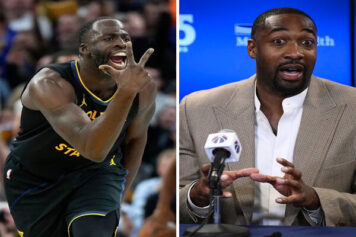Like other sports, the NBA is a copycat league.
One team starts a trend, and after it becomes successful, it spreads like a wildfire. And before you know it, centers have become 3-point shooters while shooting guards are refusing to take mid-range jumpers. The trickle-down effect is always present on the college and high school levels, as players look to the pros for guidance.
This is why the NBA must find a way to shorten their season, as it will hopefully have a positive effect on the game as a whole, and save the bodies of the future pros that will one day be a part of the league.
Reports have recently surfaced that the NBA is looking to make adjustments to their schedule. The three proposals that the league is reportedly considering include: a midseason tournament between Thanksgiving and Christmas, a reseeding of the playoffs once it gets to the conference finals, and a playoff play-in between the seventh, eighth, ninth, and tenth seeds in each conference.
A potential vote in April at the league’s board of trustees meetings could be in play, which would lead to the reduction of regular-season games. If changes are signed off on, we could see a new NBA as soon as the 2021-2022 season.
“It would need to be negotiated with the Players Association,” said NBA Commissioner Adam Silver earlier this year. “I’ve had very general discussions with (union executive director) Michele Roberts about the notion that these are the kinds of things we’re looking at. I think she, of course, is supportive of looking at any ideas we have to build the business over time.”
No matter what’s eventually decided, the lessening of regular-season games is a positive, as I’d love to see the schedule eventually cut down to 60 games. At some point, the league is going to have to realize that the reduction of games is the only way to protect the league’s best assets, the players. A bold move like that would have a profound effect on the AAU and summer basketball circuits, which are some of the main culprits as to why many of today’s top players are breaking down so early in their careers.
Since the 2014 Draft, there have been multiple top picks that have missed entire seasons, or suffered significant injuries during their rookie years.
Jabari Parker was the No. 2 overall pick in 2014 and went down with an ACL injury as a rookie. The fifth pick in that same draft was Dante Exum, who suffered an ACL injury after his rookie season, while the seventh pick, Julius Randle, broke his right tibia in the first game of the season in a gruesome injury.
Jahlil Okafor (No. 3 pick 2015), Ben Simmons (No. 1 pick 2016), Markelle Fultz (No. 1 pick 2017), Lonzo Ball (No. 2 pick 2017), and Zion Williamson (No 1. pick 2019) have all spent substantial time in street clothes on the bench instead of being in uniform during their rookie seasons.
“And, again, I understand I shouldn’t use a broad brush to criticize the entire AAU system, because parts of it are excellent. But also parts of it are very broken, especially [as it] relates to injuries in the league. What we’re seeing is a rash of injuries among young players,” said Silver during a press conference before the 2017 NBA Finals.
Earlier this year, ESPN released two reports on the threat of youth basketball, and how the amount of games young players are playing is making them “ticking time bombs.”
“Players shouldn’t be peaking at 16 or 17. But I can tell you from a data standpoint, you can make a case for it. It just shouldn’t be that way. It should happen at 23, 24, 25, but with most of these kids, that’s not the case,” said Marcus Elliot in the report, who serves as a lead scientist at a sports science lab.
The NBA and USA Basketball have taken note of the trend over the past few years, and in 2016 created guidelines regarding youth basketball. The bulk of them focus on limiting the number of games played per day, recovery and time away from the sport, and delaying single-sport specialization until the teenage years.
While the term “load management” may not be what fans and television networks want to hear.
NBA has to do something because it has serious TV issues. With load management continually making a joke of the importance of the regular season & with social media making it so spectacular moments are captured, there are not many compelling reasons to watch whole games.
— Andrew Marchand (@AndrewMarchand) November 23, 2019
It’s becoming a necessity.
“I mean, it was just a different time in the sports world period. Now we have the term load management, said Derrick Rose in a recent interview with NBC Sports Chicago. “I don’t think I would’ve taken it as far as Kawhi [Leonard] as far as like they’re really being cautious about his injury or whatever he has. But if load management would’ve been around, who knows? I probably would’ve still been a Chicago Bull by now. But it wasn’t around.”
According to the NBA, no player has missed a game on national TV due to rest this season, as Kawhi Leonard’s situation is listed as injury management. And for all the noise that’s been created around the “load management” conversation, much of the information has been false, as only a few players have missed games. This isn’t some league-wide epidemic like some are making it out to be.
Joel Embiid, Blake Griffin, Leonard, and Rose have been the only former All-Stars to miss games due to injury management this season. Al Horford, Kyle Korver, Ja Morant, Tristian Thompson, and Russell Westbrook have been the only healthy players to miss games due to rest, and none of those games were televised on ESPN or TNT.
Last season, the Golden State Warriors and Toronto Raptors competed in six games during the NBA Finals. But did you realize that between the preseason, regular season, and postseason, the two teams combined to play 220 games last season?
The Warriors dealt with injuries throughout the postseason, were ravished by them in the Finals, and are still dealing with them this season. And as of Monday, Leonard has only played in 12 of the Clippers 17 games this season, due to a lingering injury from his time in Toronto and San Antonio.
Kawhi Leonard to miss yet another game against Thunder due to 'load management'. Was the real reason Kawhi recruited Paul George was to do all his heavy lifting in the regular season while he 'rests'? pic.twitter.com/lgKRxofkcY
— Vic Mackey (@tim_mcharg) November 19, 2019
Load management is the bad fruit that’s produced from a poisoned tree. But in this case, fans are upset with the players instead of focusing on the system that’s damaged them.
The first step in fixing that problem is the reduction of regular-season games. Because once the rest of the basketball world realizes how much of an issue this is, they will have no choice but to follow in the NBA’s footsteps.
It’s supply and demand instead of X’s and O’s.



